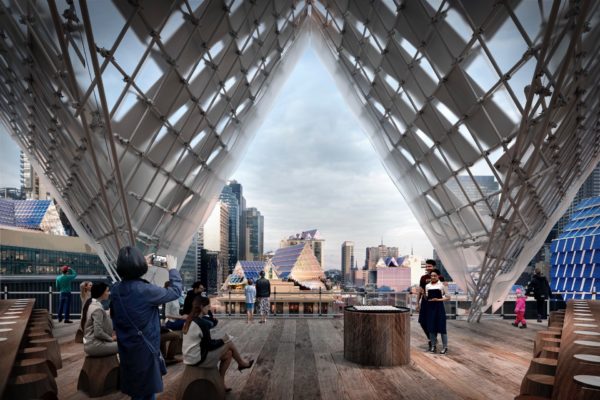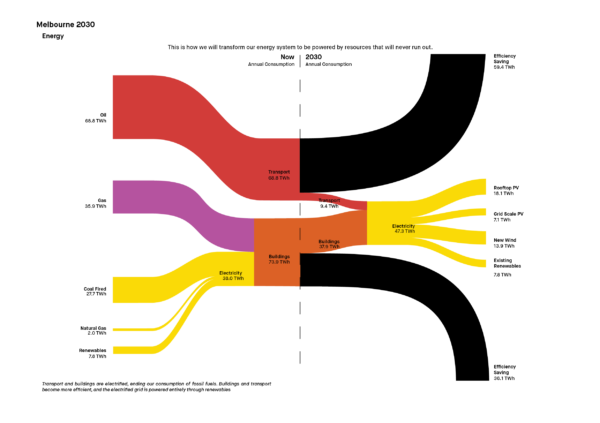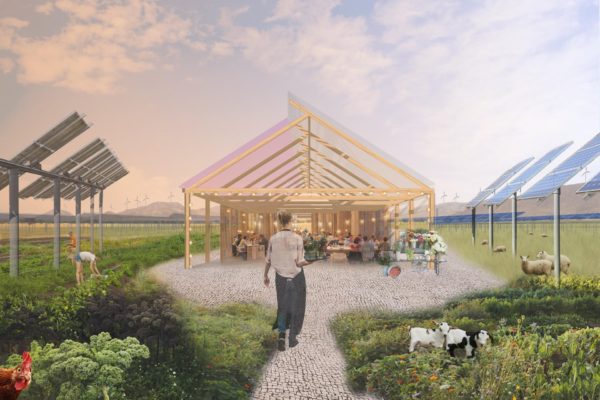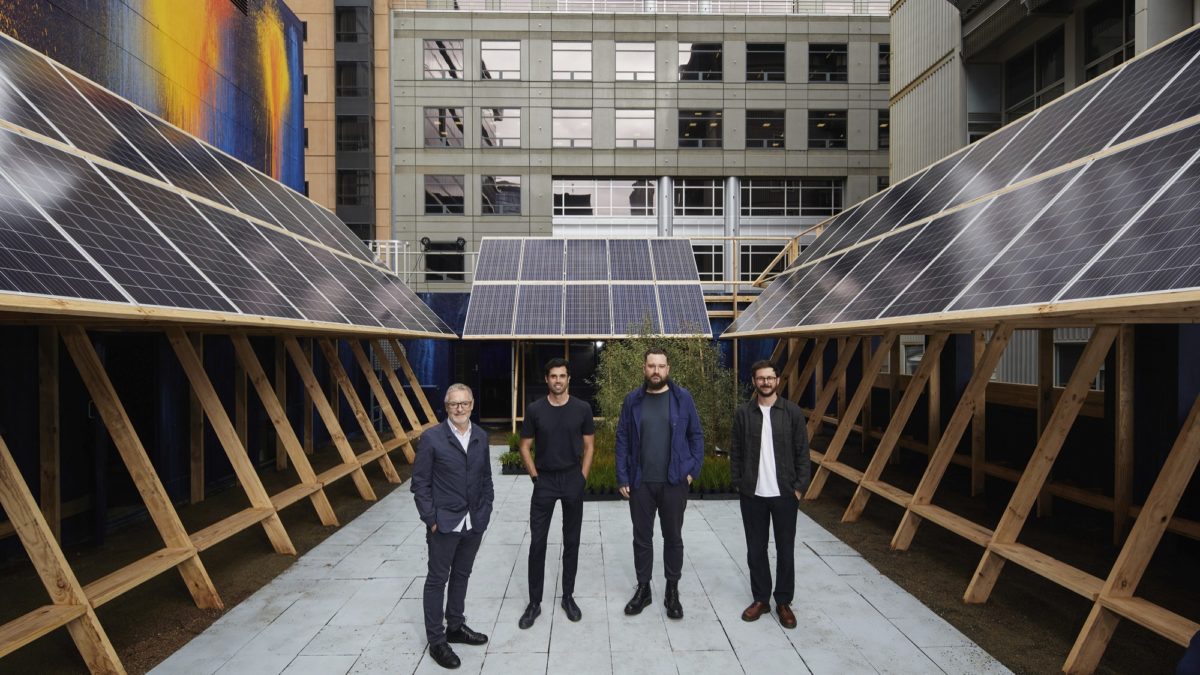What happens when 15 of Melbourne’s top architectural and design firms come together to imagine a new future for the city? Finding Infinity call it “A New Normal” and put on an independent exhibition at Melbourne Design Week that looks to demonstrate how Melbourne can become an entirely self-sufficient city by 2030, a demonstration with a solar pavilion at its centre.
“Creating Space With Solar” is a solar pavilion and the centrepiece of “A New Normal City Hub” in downtown Melbourne. The brainchild of Mathew van Kooy, a partner at John Wardle Architects, the winner of the Melbourne Design Week Award provides a blueprint for the acceleration of Greater Melbourne’s transition from a consumer to a producer by 2030, a blueprint that calls for solar PV on every second rooftop in Melbourne.
The solar pavilion itself consists of 68 260 W panels generating 56 kW/h daily and 18,000 kW/h annually, enough energy to power a 2030 Australian home for two years. Responding to the Design Week’s theme of “Design the World You Want”, van Kooy says “we created a pavilion that acts as a prototype…If all the rooftops in Greater Melbourne had solar panels, they could power 76% of the city. The pavilion is both a prototype and a pathway to a more sustainable future.”
The solar array is accompanied by an artwork from Ash Keating Studio titled “A New Response,” which utilises vibrant colours as if light reflected from the solar panels had painted the adjacent wall.
Melbourne is known for utilising its rooftop spaces for bars, restaurants and similar venues. With that in mind, there is a new solar architecture that could come into play, the tent-form, or perhaps we might call it the PV-Teepee. “The roofs that enclose them are steeply pitched to maximise the catchment area and to capture the sun.” The design tops off any space with the ability to provide the energy it needs, supporting a whole new layer of life in Melbourne.

Behind the project entire is the plan to transition, and solar forms a vital piece of that. In addition to solar’s significant role in the electrification of transport, transitioning the grid and feeding energy storage, solar architecture is at the hard of the transformation. “Solar architecture is crucial to Melbourne becoming an energy producer,” the A New Normal Report states, “currently only one hundredth of solar PV potential within the Melbourne CBD has been realised…Maximising solar generation within the city reduces the need for new grid scale infrastructure…We need to expand take-up of PV in Melbourne significantly, aiming to cover every roof and unshaded facade that is financially viable and technically feasible.”
Modelling from The Australian Photovoltaic Institute (APVI), the Institute of Sustainable Futures (ISF), and the University of New South Wales (UNSW), suggests Greater Melbourne is capable of generating 95% of its current energy needs through rooftop solar within its borders.

Finding Infinity has therefore set a minimum target of installing solar PV on 50% of Melbourne’s rooftops. On rooftops with habitable space and plant space this may require agrivoltaic solutions and possibly facade PV. The report calls on government to incentivise the maximisation of rooftop space.
According to the report achieving this goal would cost $22 billion, pay itself back in seven years, provide 42,500 jobs through to 2030 and 5,900 permanent jobs.
The report also envisions a future in which the Latrobe Valley is heavily utilised with solar and wind generation, not just in commercial projects, but integrated with agriculture, horticulture and viticulture through agrivoltaics integration.

Melbourne’s Lord Mayor, Sally Capp, said “Cities like Melbourne must play a leadership role in this ‘new normal’, working with our communities to demonstrate the social and economic advantages of new and better ways of thinking. We know Melbourne’s commitment to net zero emission by 2040 will be more important than ever to many people in the wake of our horrendous bushfires; a transition to 100% renewable energy for buildings and transport will play a major role in reaching that target.”
With a total required investment estimated at $100 billion, but an opportunity to generate approximately $14 billion in income annually, Melbourne’s transformation could pay for itself in less than a decade.
The project will run to April 5 on the rooftop of 130 Little Collins Street.
This content is protected by copyright and may not be reused. If you want to cooperate with us and would like to reuse some of our content, please contact: editors@pv-magazine.com.









By submitting this form you agree to pv magazine using your data for the purposes of publishing your comment.
Your personal data will only be disclosed or otherwise transmitted to third parties for the purposes of spam filtering or if this is necessary for technical maintenance of the website. Any other transfer to third parties will not take place unless this is justified on the basis of applicable data protection regulations or if pv magazine is legally obliged to do so.
You may revoke this consent at any time with effect for the future, in which case your personal data will be deleted immediately. Otherwise, your data will be deleted if pv magazine has processed your request or the purpose of data storage is fulfilled.
Further information on data privacy can be found in our Data Protection Policy.